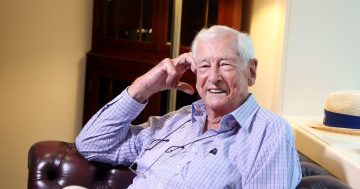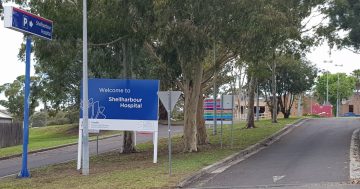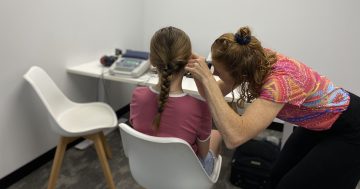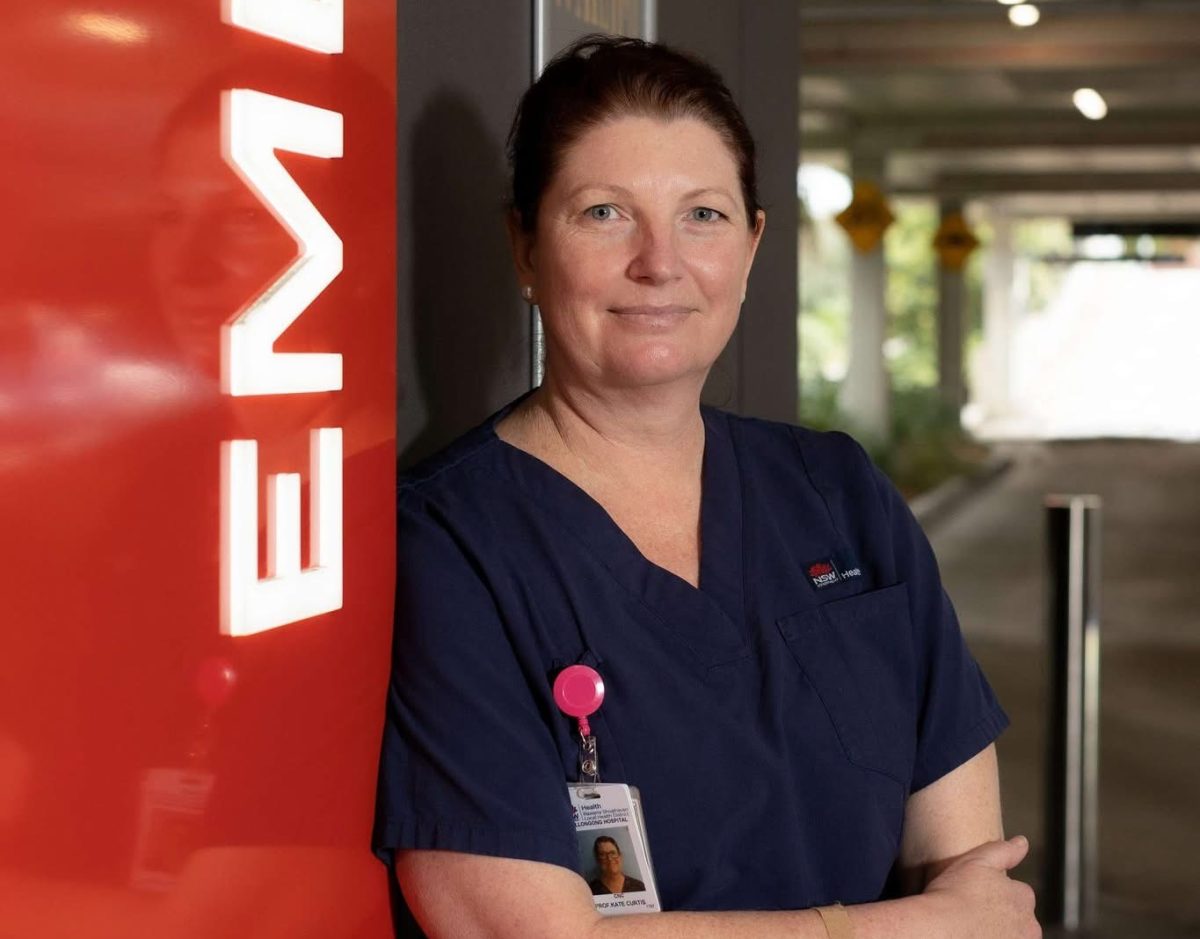
Professor Kate Curtis was made an Officer of the Order of Australia (AO) in the General Division for her incredible service to trauma and emergency nursing, critical care research, tertiary education and professional organisations. Photo: ISLHD.
While working as a trauma nurse at St George Hospital, Coledale’s Professor Kate Curtis had an idea that sparked a game-changer for trauma care across Australia and beyond.
In her day-to-day data collection, she noticed communication gaps between specialists that were affecting patient outcomes and experiences.
“When you have a traumatic injury, there are often multiple specialists involved — an orthopaedic surgeon for your broken bones, a cardiothoracic surgeon for your lungs, perhaps a neurosurgeon for your spine,” she said.
“Looking at the data, I’d think, ‘If this person had just spoken to that person, the outcome would’ve been so much better — and more efficient’.
“The solution seemed clear: assign a trauma case manager to coordinate these teams and ensure everyone is on the same page. A kind of concierge to support you through the trauma journey.”
Six years of research later, this model became policy in Australia — and was soon adopted in New Zealand and the UK.
Many of Prof Curtis’ career-defining breakthroughs have emerged this way: from observations and questions raised in her everyday nursing practice, combined with a desire to make a difference and the skills to generate evidence to back her ideas.
She believes real change requires data, evidence and a lot of lobbying.
“Once you get evidence, you publish it, present it, talk to people, and build a case for change,” she said. “For me, it was also a series of great mentors and working in a place that supported innovation and change.”
That combination has propelled Prof Curtis into a decorated career marked by high-level roles in leading medical and research institutions in Australia and internationally.
Among her current roles, Prof Curtis is a registered nurse at Wollongong Hospital ED, a professor of Emergency and Trauma Nursing at University of Sydney, Director of Emergency and Critical Care Research for the Illawarra Shoalhaven Local Health District (ISLHD), senior editor of the Australasian Emergency Care journal and the world’s most published author in trauma and emergency nursing.
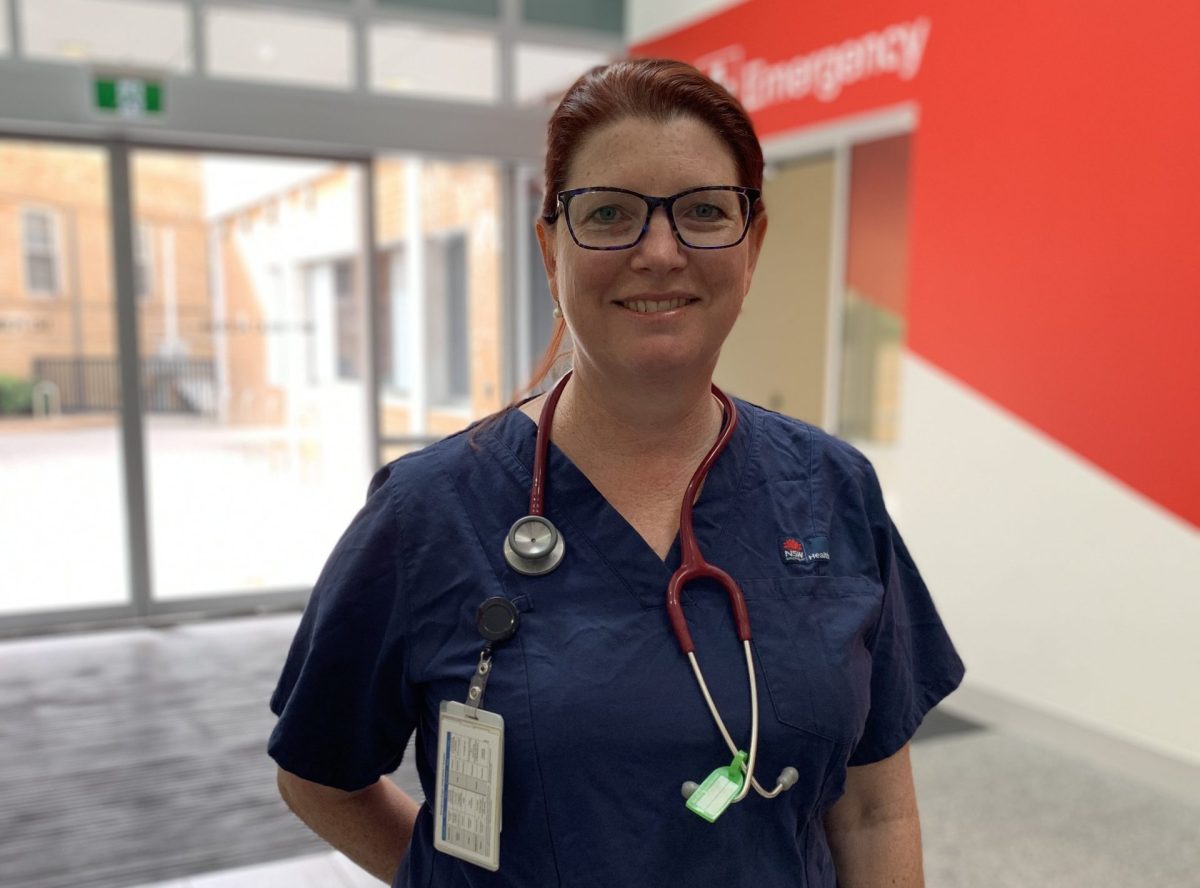
Prof Curtis said nurses were a linchpin in emergency care outcomes and experiences. Photo: ISLHD.
Prof Curtis is also co-founder and lead investigator of Project HIRAID at the University of Sydney — a framework designed to bring a more universal, systemised approach to emergency department nursing.
“The emergency department environment demands a different kind of nursing,” Prof Curtis said.
“Patients who come to EDs are often incredibly stressed and in pain, and we have to work out what’s wrong.
“We have to be able to do that for everyone from newborns to centenarians, and every presentation you can imagine that comes through the door. We have to do that in an environment that’s chaotic, stressful, high-pressure, noisy, often violent and always overcrowded.
“A triage nurse does an initial assessment but after, while that patient is waiting to see a doctor, they are solely in the care of the emergency nurse. What that nurse does or doesn’t do can have a massive impact on the patient, and if we get it wrong, the outcome can be catastrophic.”
The HIRAID Nursing Framework is the result of the largest clinical trial ever conducted with emergency nurses anywhere in the world.
It showed that using a consistent structure during initial assessments leads to better outcomes and experiences. Nurses are more confident, perform better assessments and start the right treatments sooner — reducing patient deterioration and adverse events in emergency care.
The framework has already been adopted in Tasmania, South Australia and parts of Victoria and NSW. Work is underway to roll it out in Thailand, Sweden, Denmark and South Africa.
For her distinguished service to trauma and emergency nursing, critical care research, tertiary education and professional organisations, Prof Curtis was made an Officer of the Order of Australia (AO) in the General Division.
“This honour is the culmination of the efforts of the many people I work with; I just happen to be the person leading and pulling it together,” she said.
“I think it’s great it’s being recognised the difference nurses can make in emergency care. In particular, it’s great to have the work of nurses acknowledged, given everything we do can impact patients’ outcomes and the quality of their care. That’s a huge responsibility.”










